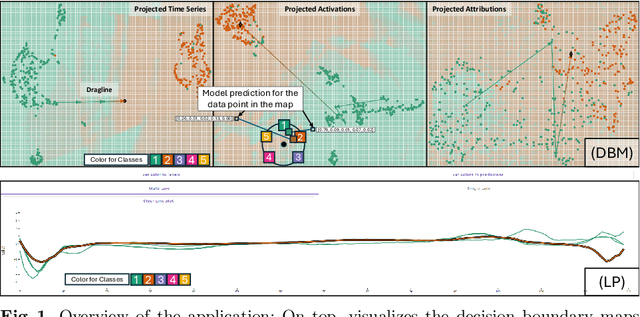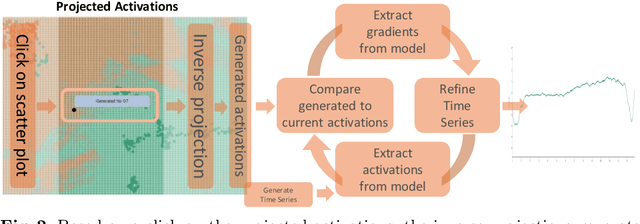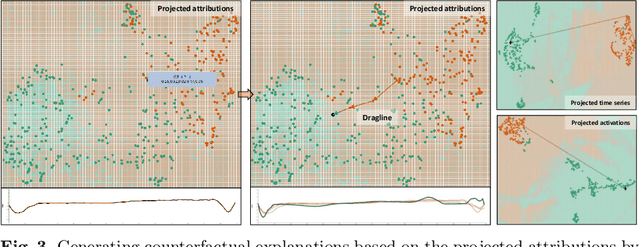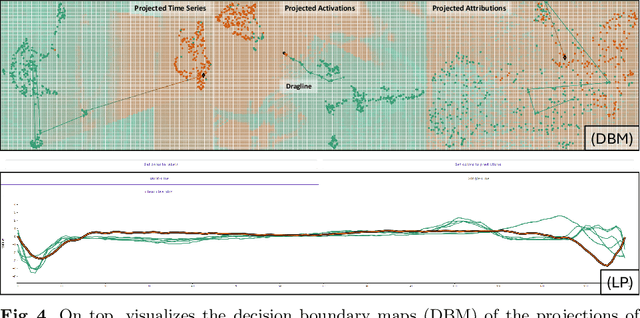Julius Rauscher
Interactive Counterfactual Generation for Univariate Time Series
Aug 20, 2024



Abstract:We propose an interactive methodology for generating counterfactual explanations for univariate time series data in classification tasks by leveraging 2D projections and decision boundary maps to tackle interpretability challenges. Our approach aims to enhance the transparency and understanding of deep learning models' decision processes. The application simplifies the time series data analysis by enabling users to interactively manipulate projected data points, providing intuitive insights through inverse projection techniques. By abstracting user interactions with the projected data points rather than the raw time series data, our method facilitates an intuitive generation of counterfactual explanations. This approach allows for a more straightforward exploration of univariate time series data, enabling users to manipulate data points to comprehend potential outcomes of hypothetical scenarios. We validate this method using the ECG5000 benchmark dataset, demonstrating significant improvements in interpretability and user understanding of time series classification. The results indicate a promising direction for enhancing explainable AI, with potential applications in various domains requiring transparent and interpretable deep learning models. Future work will explore the scalability of this method to multivariate time series data and its integration with other interpretability techniques.
CorpusVis: Visual Analysis of Digital Sheet Music Collections
Mar 23, 2022



Abstract:Manually investigating sheet music collections is challenging for music analysts due to the magnitude and complexity of underlying features, structures, and contextual information. However, applying sophisticated algorithmic methods would require advanced technical expertise that analysts do not necessarily have. Bridging this gap, we contribute CorpusVis, an interactive visual workspace, enabling scalable and multi-faceted analysis. Our proposed visual analytics dashboard provides access to computational methods, generating varying perspectives on the same data. The proposed application uses metadata including composers, type, epoch, and low-level features, such as pitch, melody, and rhythm. To evaluate our approach, we conducted a pair analytics study with nine participants. The qualitative results show that CorpusVis supports users in performing exploratory and confirmatory analysis, leading them to new insights and findings. In addition, based on three exemplary workflows, we demonstrate how to apply our approach to different tasks, such as exploring musical features or comparing composers.
 Add to Chrome
Add to Chrome Add to Firefox
Add to Firefox Add to Edge
Add to Edge